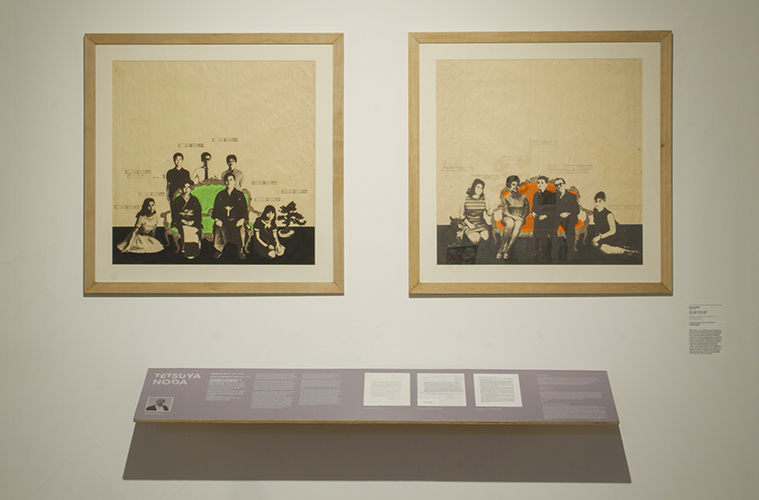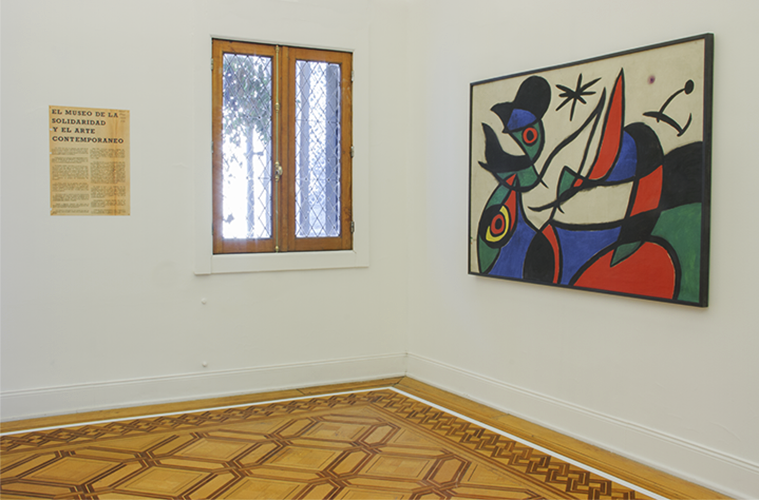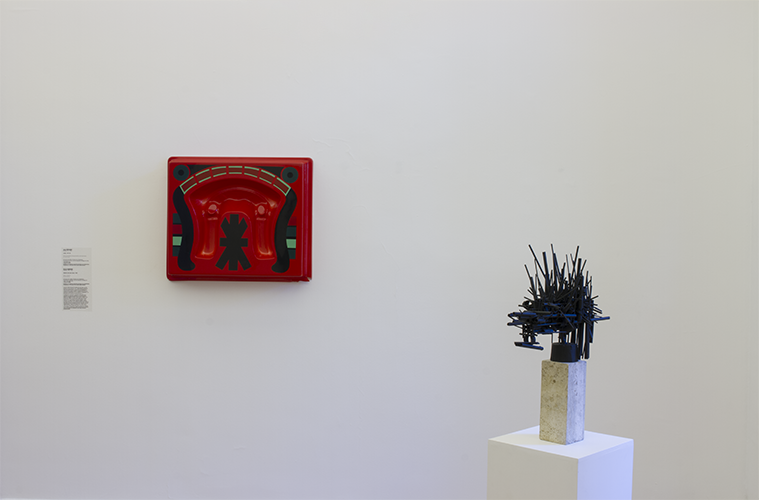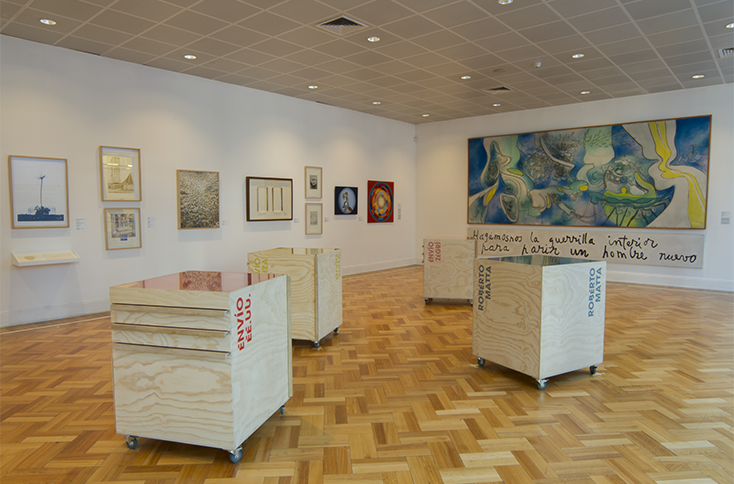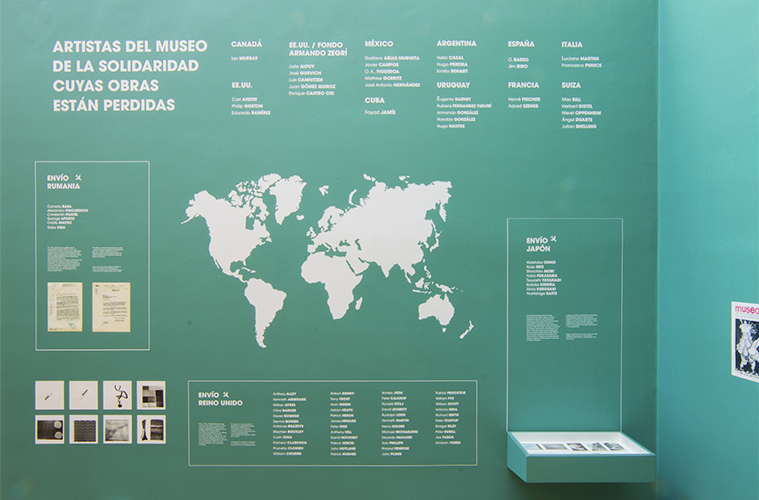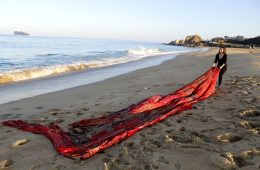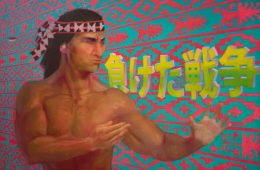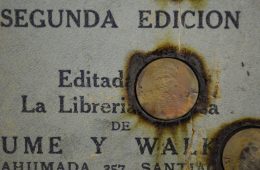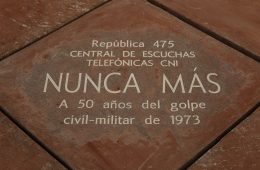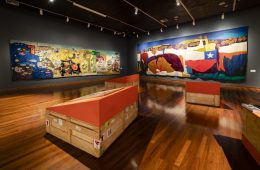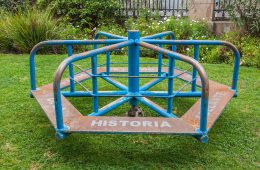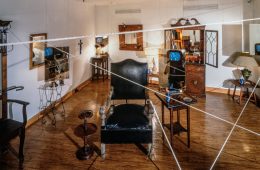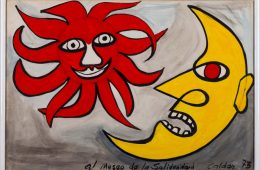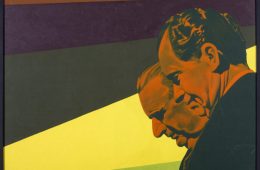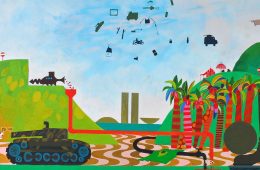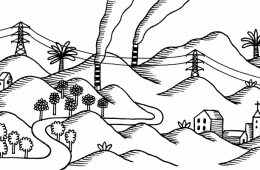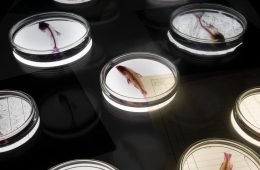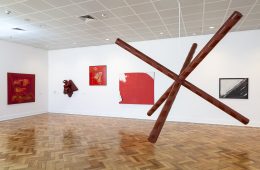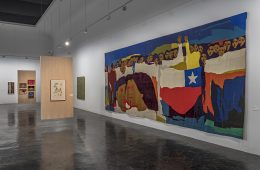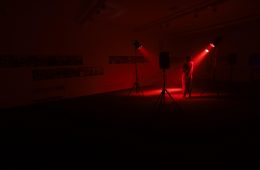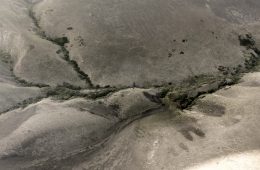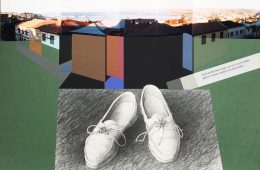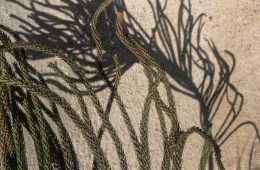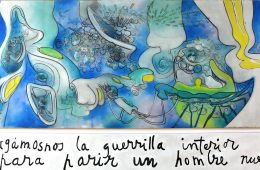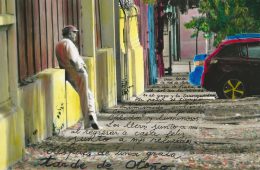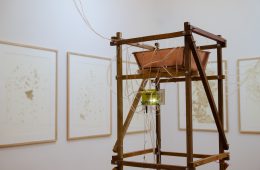This exhibition publicly celebrates the arrival to the Museum of a group of works donated between 1972 and 1973, which after the coup d’État were clandestinely deposited under custody of the Museo Nacional de Bellas Artes (MNBA).
The hidden works were produced between 1960 and 1973, and correspond to donations arrived from Switzerland, USA, France and Japan, by artists committed to the Museum’s cultural project.
Conceived as a journey through the breaks and opacities in our cultural history, the exhibition —including graphic works, paintings and sculptures— offers the first public appearence of these 43 works. Among which we stand out the abstract expressionist work of Robert Motherwell, the silkscreen prints of Japanese artist Tetsuya Noda and the “Armando Zegrí” collection, established in honor of this multifaceted Chilean writer, who created in 1953 one of the first galleries for Latin American art in New York.
The show also commemorates the two exhibitions of the Museo de la Solidaridad that were organized at the beginning of 1973 with the works of Joan Miró, Eduardo Chillida and Noemí Gerstein, among others; and it includes a reference to the historical and social context of the arrival of these works to the country.
Research has a relevant space within the exhibition, through the announcement of lost works, the location of which is still under investigation and the restoration of the pieces, as a part of their recuperation process, after being hidden for four decades.
The recovering of the works is part of an inter-institutional collaboration with the MNBA and the National Center for Conservation and Restoration (CNCR), institutions that operate under the Cultural Patrimony National Service of the Ministry of Cultures, Arts and Patrimony.
This exhibition is possible thanks to Fondo Nacional de Desarrollo Cultural y las Artes, Convocatoria 2018.
